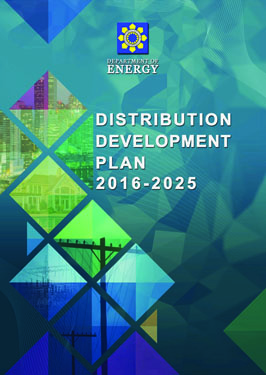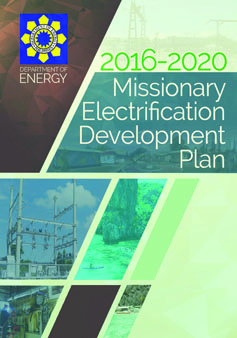What's New
|
Published on Friday, 29 June 2018
|
|
Published on Tuesday, 13 March 2018
|
|
Published on Friday, 2 March 2018
Executive Summary
This DDP also featured the summary tables of the total number of metered customers, energy sales, energy purchased and peak demand. With regard to the number of customers, there were 17.7 million customers being served by the DUs in 2015. With an annual average growth rate (AAGR) of 3.87%, customer connection is seen to increase from 18.5 million in 2016 to 26.0 million in 2025. In terms of energy sales, DUs have sold a total of 56,393 GWh in 2015 which is forecasted to rise to 95,626 GWh by 2025 with an AAGR of 5.51% from its 2016 level. On the other hand, a total of 69,340 GWh was purchased by the DUs in 2015, which slightly increased to 73,103 GWh in 2016 and will continue to grow to 105,874 GWh by 2025 with an AAGR of 4.32%. For the peak demand, DUs registered a peak of 11,764 MW in 2015 which is projected to grow annually at 4.30% AAGR from 12,474 MW in 2015 to 17,914 MW in 2025. To ensure reliability and security of electricity supply to the member-consumers, DUs are proposing the following infrastructure projects for the ten-year planning period: (i) 5,577 ckt-km for the expansion and rehabilitation of sub-transmission lines; (ii) 34,233 ckt-km for the expansion and rehabilitation of distribution lines; and (iii) 16,375 MVA additional substation capacity. All these proposed capital expenditure projects will require Php968.41 billion for implementation, including the financing requirements for electrification projects, network and non-network projects. Click to view/download the PDF file of 2016-2025 Distribution Development Plan |
|
Published on Thursday, 1 March 2018
Consistent with the social and development agenda of the government, the 2016 MEDP outlines the various policies, plans and programs to expand electricity access and improve the electricity services in off-grid areas. It gives an update on the condition of missionary electrification and later on delineates the government’s plans of action and policy directions to ensure the provision of adequate, reliable, and efficient supply of electricity in the missionary areas.1 In particular, this MEDP addresses the pressing conditions and needed policies pertaining to the: (1) improvement of the Private Sector Participation (PSP) Program; (2) improvement of operations and services in missionary areas; (3) and the rationalization of Universal Charge for Missionary Electrification (UCME). ISSN: 2599-5235 Click to view/download PDF file of 2016-2020 Missionary Electrification Development Plan |
|
Published on Thursday, 1 March 2018
2017 List of Existing Power Plants per Grid: 2017 List of Existing Power Plants in Off-grid areas for Luzon, Visayas and Mindanao 2017 Installed and Dependable Capacity Mix: |

 The 2016-2025 DDP is presented in infographic showing the existing system map and distribution network of the distribution utilities (DUs) indicating its substation and corresponding substation capacities. It also include the10-year outlook on the DUs’ supply-demand requirements, basic information on their 2015 actual number of customers and energy sales for each customer type, system loss, percentage level of household energization, number of barangay in the franchise, length of distribution lines in circuit kilometer, franchise area in square kilometer and franchise population.
The 2016-2025 DDP is presented in infographic showing the existing system map and distribution network of the distribution utilities (DUs) indicating its substation and corresponding substation capacities. It also include the10-year outlook on the DUs’ supply-demand requirements, basic information on their 2015 actual number of customers and energy sales for each customer type, system loss, percentage level of household energization, number of barangay in the franchise, length of distribution lines in circuit kilometer, franchise area in square kilometer and franchise population. The Department of Energy (DOE), in coordination with the Small Power Utilities Group of the National Power Corporation (NPC-SPUG), the National Electrification Administration (NEA), Distribution Utilities (DUs), New Power Providers (NPP), and Qualified Third Parties (QTP), pursuant to Rule 13 of the Implementing Rules and Regulations (IRR) of Republic Act No. 9136 or the Electric Power Industry Reform Act of 2001 (EPIRA), prepared the 2016-2020 Missionary Electrification Development Plan (2016 MEDP). It covers the development plans and programs of the Government to increase access to sustainable energy in off-grid areas in the country and improve the efficiency in the use of energy.
The Department of Energy (DOE), in coordination with the Small Power Utilities Group of the National Power Corporation (NPC-SPUG), the National Electrification Administration (NEA), Distribution Utilities (DUs), New Power Providers (NPP), and Qualified Third Parties (QTP), pursuant to Rule 13 of the Implementing Rules and Regulations (IRR) of Republic Act No. 9136 or the Electric Power Industry Reform Act of 2001 (EPIRA), prepared the 2016-2020 Missionary Electrification Development Plan (2016 MEDP). It covers the development plans and programs of the Government to increase access to sustainable energy in off-grid areas in the country and improve the efficiency in the use of energy.